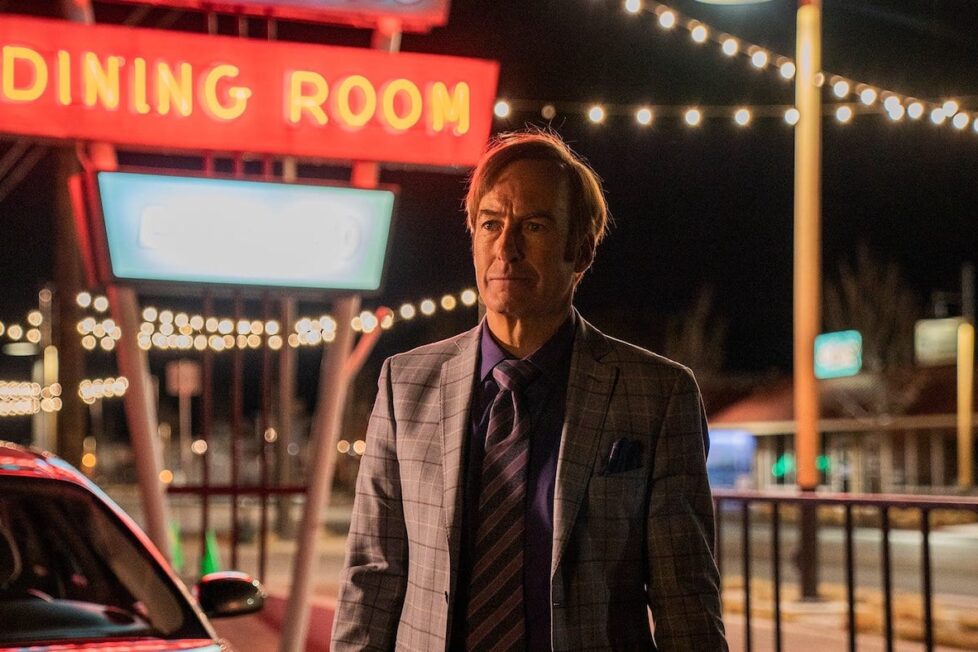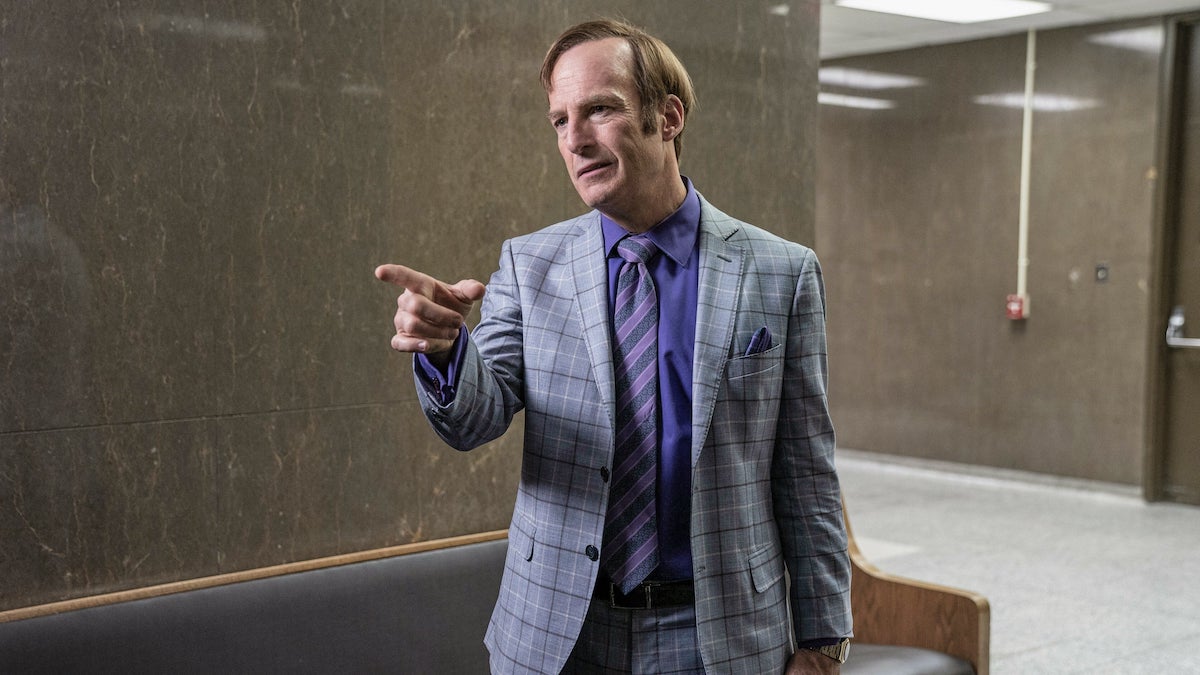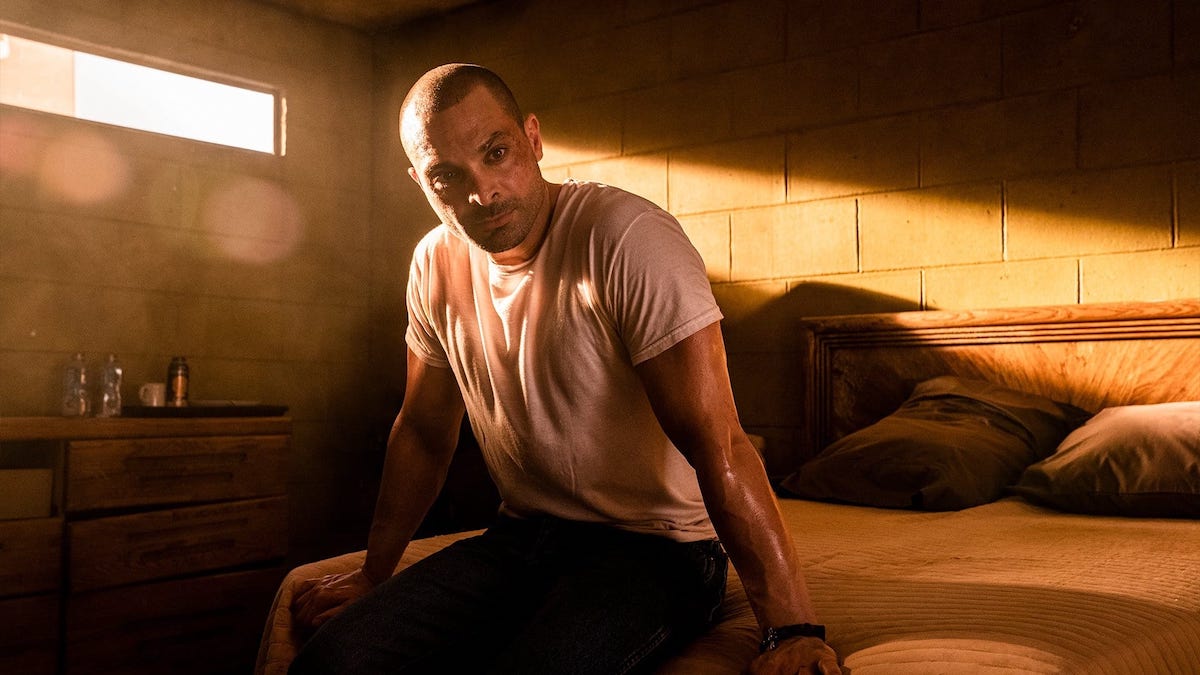BETTER CALL SAUL, 6.1 & 6.2 – ‘Wine and Roses’ & ‘Carrot and Stick’
Saul Goodman plots revenge against Howard Hamlin, as both Nacho and Lalo try to escape from Mexico.

Saul Goodman plots revenge against Howard Hamlin, as both Nacho and Lalo try to escape from Mexico.


Better Call Saul will soon have produced one more episode than Breaking Bad, and even if it hasn’t become the cultural phenomenon its predecessor became it’s just as meticulously constructed. However, its core reason for existing—to see how Saul Goodman (Bob Odenkirk) became a criminal lawyer—has arguably been unworthy of six seasons (and seven years) charting one man’s evolution. This is now the final season and Jimmy McGill’s only recently assumed the name ‘Saul Goodman’, while staples of the character from Breaking Bad have yet to fully form, like his kitsch “cathedral of justice” office.
The cold open of “Wine and Roses” is set shortly after Breaking Bad‘s finale (the near-future of Better Call Saul), where Saul’s luxury residence is being taken apart by cops. It’s unrecognisable for viewers and takes a while for us to even realise where we might be, until giveaways like a cardboard cutout of the man himself appear. We’ve never been in Saul’s home until now (only Jimmy’s), but the atrocious taste and Trumpian touches like a golden toilet show how much Slippin’ Jimmy bought into the idea of becoming a flashy showman whose house of cards are about to come tumbling down around his ears. I just wonder how well the writers can convincingly end the show with a feeling Jimmy’s now a different type of operator, as the first few episodes are again wrapped up in Jimmy’s grudge against HHM boss Howard Hamlin (Patrick Fabian). I know there’s a bigger issue for scheming Kim here, in trying to settle the Sandpiper lawsuit so Jimmy can get his share, but I’m not yet hooked by it.
Perhaps the relative simplicity of charting the emergence of Saul Goodman is why the series, wisely, leaned into being more of a direct prequel to Breaking Bad and its underworld feuds between characters like drug lords Hector Salamanca (Mark Margolis) and Gus Fring (Giancarlo Esposito), with everyone’s favourite ‘fixer’ Mike Ehrmantraut (Jonathan Banks) moving between both halves of the show’s narratives. As I’ve mentioned many times in these weekly recaps, the drama involving the drug cartels is often more exciting and fascinating than anything Saul himself is getting up to, in all honesty, as much as I enjoy the slow-burn character study.

This is definitely the issue with “Wine and Roses”, which split its time between Saul and Kim (Rhea Seehorn) plotting to ruin Howard’s life by sneaking a packet of what looked like cocaine into his locker at a country club, to embarrass him in front of Clifford Main (Ed Begley, Jr.), and the repercussions in Mexico of season 5 finale “Something Unforgivable“. And the latter was inordinately more appealing, with Lalo Salamanca (Tony Dalton) having survived the attack on his family compound by Fring’s mercenaries and now tying to sneak back across the border and get revenge. And having made impressive ground considering his injuries, he was ultimately convinced by his uncle Hector that he needs “proof” that Fring was behind everything and opts to stay in Mexico to get it.
Simultaneously, Nacho (Michael Mando) was going through the same ordeal as Lalo, guided to a motel and told to lie low a few days before extraction to the US, knowing there’s a bounty on his head for enabling the Salamanca massacre. And what awaits him back in Albuquerque, anyway? Mike asked Gus to be respectful of what Nacho did to help him defeat Lalo, but Nacho notably wasn’t around during Breaking Bad and seems to be a dangling thread a sociopath like Gus would cut off.
It does seem strange that Saul Goodman’s storyline still feels so separate from everything else, and focused on a rather petty hatred of someone who doesn’t deserve all the abuse. Or it that just me? But seasons of the show tend to build towards moments where Saul comes into the orbit of bigger problems involving the drug cartels and the two sides of the show collide in entertaining ways. Plus we still don’t know if Kim survives the show, or is absent from Breaking Bad for other reasons.
And if nothing else, Better Call Saul continues to have a mesmeric mood and beautiful writing. It’s also a wonderful series to look at, with some excellent shots of rather simple things that elevate it above most other things on TV, even today. The slow-motion opening shot of the garish neck ties falling into a box? Sublime. The unnecessary but amazing moment we zoomed-out from an ant crawling on a dead man’s fingertip? Incredible. That high altitude desert shot with a single road leading into mountains? Cinematic. There was even a fun moment with a close-up of a marble rolling through some plastic tunnels, being played with by Mike’s niece. There are shows with far larger budgets and more expensive VFX sequences, but Better Call Saul‘s amazing cinematography and clever shot compositions are rarely beaten.

“Carrot and Stick” was a more interesting hour for Saul and Kim, as their plot against Howard thickened in some unexpected ways. The final seasons of TV shows have a tendency to mirror how they started, so it’s fitting that Betsy (Julie Ann Emery) and Craig Kettleman (Jeremy Shamos) have reentered the picture. Although it’s been years since we saw them in the first season, so one can be forgiven for wondering who this vaguely familiar couple are. But they were the the affluent married couple who embezzled $1.6M from the county and had Jimmy as their counsel, who accepted a plea bargain that put Craig in prison, only now they’re trying to rebuild their lives with a dodgy tax preparation service out in the desert. And it seems Jimmy and Kim want to use them in their scheme to ruin Howard, by having them think his judgment was impaired because he uses cocaine, and eventually have them over a barrel when Kim threatens to blow their latest scam and call the IRS. It remains to be seen exactly what will follow, but I’m certainly interested in where this might be headed, even if it doesn’t yet strike me as the sort of story we want Saul Goodman to be headfirst in for the final season. But perhaps this will only take up a small chunk of the remaining episodes.
The situation in Mexico was more nail-biting, with restless Nacho cooped up in his sweltering hotel and becoming more paranoid by the hour. But it turned out his instincts were right, as he sneaked out the back of his room and circled round on a man paid by Gus to keep an eye on him. Realising Gus has betrayed him to the Salamanca cartel, there followed a brilliantly tense action sequence with Nacho trying to hot-wire a car and escape just as the cartel’s hit squad, led by the Cousins (Luis and Daniel Moncada), arrived to eliminate him. It wasn’t exactly up to the Breaking Bad heights of “One Minute”, when Hank had a similar situation to deal with, but it was still lots of fun. And while Nacho’s days could still be numbered, he’s not yet ready to check out (so to speak) and managed to speed off with a blown out tyre. And having later called Mike, asking to speak to Gus, one presumes he’s thought of a way to keep himself useful and alive now he’s burnt his bridge with the Salamanca’s.
As the beginning of the end, these two episodes were once again masterfully written and produced. I adore how this show takes its time over the little things, as moments a film would rush past in seconds is often given a lot of breathing space. Just take the opening to “Carrot and Stick” with the two call girls hanging out at Nacho’s empty apartment, stacking dominoes. There was really no need to spend what felt like five minutes on those two characters being told to leave town after Mike’s arrival, but you’re nonetheless engrossed in the moment because a part of your mind’s always curious why this moment is being given such attention. Is it meaningful in some way? Will it be later? Usually, the answer is no, but this world and its many characters are able to hold your attention and the show benefits from the richness that brings it.

